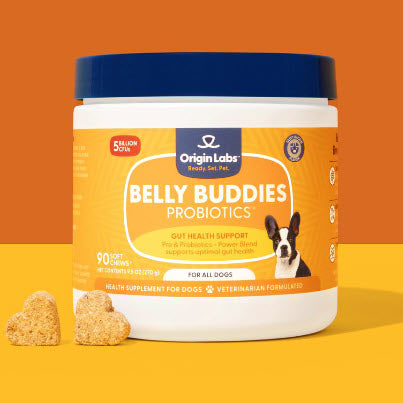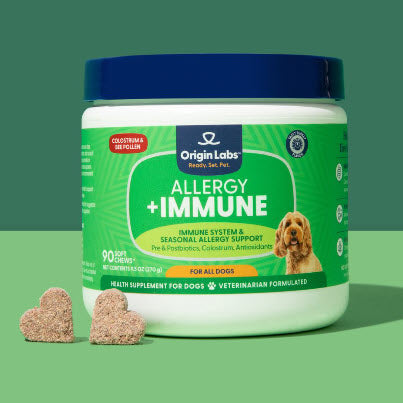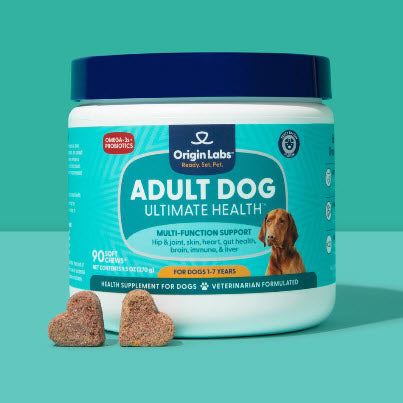Introduction
Understanding what dogs can and cannot eat is crucial for ensuring their health and well-being. Many dog owners enjoy sharing their favorite snacks with their pets, and beef jerky is a popular choice. However, the safety of beef jerky for dogs is a topic of concern.
Beef jerky is a beloved snack among humans due to its savory flavor and convenience. Its high protein content makes it tempting to share with our canine companions. But not all ingredients in beef jerky are safe for dogs. Common additives like onions, garlic, and excessive sodium can pose significant health risks.
This guide aims to provide comprehensive information on whether dogs can safely enjoy beef jerky. We'll explore potential dangers, discuss healthier alternatives, and offer tips on selecting safe jerky treats for your dog.
For instance, if you have a puppy, iyou may consider incorporating best puppy health supplements into their diet. Similarly, if you have a senior dog, hip & joint supplements formulated specifically for them might be beneficial in maintaining their overall health.
By the end of this guide, you'll have the knowledge needed to decide if beef jerky is suitable for your dog's diet.
Is Beef Jerky Safe for Dogs?
The Dangers of Onions, Garlic, and Other Harmful Ingredients
Beef jerky might seem like a delicious treat for your furry friend, but it's important to understand the potential dangers lurking within this popular snack. One of the most significant concerns involves the presence of onions and garlic, common ingredients in many beef jerky recipes.
Toxicity of Onions and Garlic to Dogs
Both onions and garlic belong to the Allium family, which is known for its toxicity to dogs. These ingredients contain compounds called thiosulfates that can damage red blood cells and lead to serious health issues.
- Onion Toxicity: Even small amounts of onion can cause harm. Symptoms of onion toxicity may include vomiting, diarrhea, lethargy, and decreased appetite.
- Garlic Toxicity: Garlic is approximately five times more toxic than onions. Consuming even a small amount can result in gastrointestinal upset and more severe health issues.
Anemia as a Result of Consuming Onion or Garlic-Flavored Beef Jerky
When dogs consume beef jerky flavored with onions or garlic, they are at risk for developing hemolytic anemia. This condition occurs when their red blood cells are destroyed faster than they can be produced.
- Pale gums
- Weakness
- Rapid breathing
- Fatigue
Example: A dog ingesting just a few ounces of onion-flavored beef jerky could suffer from life-threatening anemia within days.
Understanding these risks is crucial for any pet owner. Ensuring that your dog's treats do not contain these harmful ingredients can help prevent serious health problems.
The Impact of High Sodium Levels and Excessive Preservatives
Another critical factor to consider when feeding beef jerky to dogs is its high sodium content and the presence of preservatives.
Effects of Excessive Sodium Consumption on Dogs' Health
Beef jerky often contains high levels of salt used as a preservative. While sodium is an essential nutrient, too much can lead to:
- Dehydration: Excessive sodium causes increased thirst and urination.
- Sodium Poisoning: Symptoms include vomiting, diarrhea, tremors, seizures, and in severe cases, death.
A dog's daily sodium requirement is relatively low compared to humans. Consuming high-sodium foods like beef jerky can easily exceed their safe intake levels.
Symptoms and Risks Associated with Sodium Poisoning in Dogs
When a dog ingests too much salt, it can lead to sodium poisoning—also known as hypernatremia. This condition disrupts the balance of electrolytes in their body.
Signs to Watch For:
- Vomiting
- Diarrhea
- Lethargy
- Tremors
- Seizures
In extreme cases, untreated sodium poisoning can be fatal. It's essential to monitor your dog's diet closely to avoid such risks.
By understanding these hazards associated with certain ingredients in beef jerky, you can make informed decisions about what treats are safe for your dog. Prioritizing their health means avoiding snacks that contain harmful substances like onions, garlic, and excessive sodium or preservatives.
For those looking for safer alternatives tailored specifically for canine consumption, exploring options such as [Ultimate Health chews](https://www.tryoriginlabs.com/products/adult-dog-ultimate-health
The Impact of High Sodium Levels and Excessive Preservatives
Beef Jerky: What It Is and What It Contains
Beef jerky is a popular snack known for its savory taste and chewy texture. It is made from lean cuts of beef that are cured with salt and other ingredients, then dehydrated to make it last longer. However, this process introduces several harmful substances to dogs.
What's Inside Store-Bought Beef Jerky
Commercially available beef jerky often includes the following components:
- High sodium levels
- Preservatives
- Spices
- Flavors such as onion and garlic
The Effects of Consuming Too Much Sodium on Dogs' Health
Dogs are highly sensitive to sodium. While they do need a certain amount of sodium in their diet, consuming too much can lead to serious health problems:
- Increased thirst and urination
- Elevated blood pressure
- Kidney damage over time
Regularly giving beef jerky to dogs can result in these negative effects because of its high sodium content.
Signs and Risks of Sodium Poisoning in Dogs
When dogs eat foods that are high in salt, there is a significant risk of sodium poisoning. Symptoms of sodium poisoning include:
- Vomiting and diarrhea
- Lethargy and weakness
- Seizures in severe cases
If any of these symptoms occur after your dog has consumed salty foods like beef jerky, it is important to seek immediate veterinary attention. Prolonged exposure to high levels of sodium can worsen these conditions and lead to long-term health issues.
How Preservatives Affect Dogs' Health
Preservatives are added to beef jerky to make it last longer but can be harmful to dogs. Some common preservatives used include:
- Nitrates and nitrites
- BHA (Butylated Hydroxyanisole)
- BHT (Butylated Hydroxytoluene)
These substances can cause digestive problems, allergic reactions, or even contribute to more serious health issues with prolonged exposure.
Understanding what goes into beef jerky helps us see the potential risks it poses to dogs. Its high sodium levels and use of preservatives make it an unsuitable choice for treating our furry friends.
Alternatives to Feeding Beef Jerky to Your Dog
Benefits of Homemade Dog Treats Over Commercial Ones
Homemade dog treats offer a range of benefits that commercial options often can't match:
- Control Over Ingredients: When you make your own treats, you have complete control over the ingredients. This eliminates the risk of harmful additives, preservatives, and high sodium levels commonly found in commercial products.
- Customization: Tailor the treats to suit your dog's specific dietary needs or preferences. Whether your dog has allergies or sensitivities, homemade options allow you to adjust recipes accordingly.
- Freshness: Homemade treats are fresher than store-bought alternatives. Fresh ingredients mean better taste and more nutrients.
- Cost-Effective: Making treats at home can be more economical in the long run, particularly if you buy ingredients in bulk.
Recipe: Homemade Low-Sodium Dog Beef Jerky Treats
Creating homemade dog beef jerky is simpler than you might think. Here's a recipe for low-sodium dog beef jerky treats that are both safe and delicious.
Ingredients:
- 1 pound lean beef (e.g., top round, flank steak)
- 1 tablespoon apple cider vinegar
- 1 teaspoon turmeric powder (optional for added anti-inflammatory benefits)
Equipment:
- Sharp knife
- Dehydrator or oven
- Parchment paper (if using an oven)
Step-by-Step Guide to Making Safe and Delicious Beef Jerky Treats for Your Dog at Home
1. Preparation
Start by selecting a lean cut of beef. Trim off any visible fat as fat can spoil during storage.
2. Marinating (Optional)
While marinating isn't essential, it can add extra flavor and health benefits. Combine apple cider vinegar and turmeric powder in a bowl.
- Slice the beef into thin strips, about 1/8 to 1/4 inch thick.
- Place the beef strips into the marinade and let them sit for at least 30 minutes or up to several hours in the refrigerator.
3. Drying Process
Using a Dehydrator:
Arrange the marinated beef strips on dehydrator trays without overlapping them.
Set the dehydrator to 160°F (71°C) and dry for 4-6 hours or until fully dried and chewy but not brittle.
Using an Oven:
Preheat your oven to its lowest setting, usually around 170°F (77°C).
Line a baking sheet with parchment paper and arrange the beef strips on it.
Place the baking sheet in the oven and prop the door open slightly with a wooden spoon to allow moisture to escape.
Dry for approximately 3-4 hours, checking occasionally until they are fully dried.
4. Cooling and Storage
Allow the jerky strips to cool completely before storing them.
Store in an airtight container for up to two weeks. For longer storage, keep them in the refrigerator or freezer.
5. Serving Suggestions
Offer these homemade low-sodium dog beef jerky treats as occasional rewards rather than regular meals due to their protein content.
Always supervise your dog while they enjoy their treat to prevent choking hazards.
By making your own homemade dog treats like these low-sodium beef jerky strips, you ensure a healthier option for your furry friend free from unnecessary additives or harmful ingredients.
Choosing Safe Jerky Treats for Your Dog
When it comes to choosing jerky treats for your dog, their safety should be your top priority. With so many options available in the market, it can be overwhelming to find the right one. To help you make an informed decision, here are some factors to consider, quality standards to look for, and FDA regulations to be aware of when selecting jerky treats for your beloved pet.
Factors to Consider When Selecting Jerky Treats for Dogs
Selecting the right jerky treats involves paying attention to several criteria:
- Ingredients: Avoid jerky with onions, garlic, or other toxic ingredients.
- Sodium Levels: Opt for low-sodium options to prevent health issues.
- Preservatives and Additives: Natural preservatives are preferable. Artificial additives can be harmful.
- Source of Meat: High-quality, human-grade meat is ideal. Ensure the meat source is reputable.
Quality Standards for Dog Jerky
High-quality dog jerky should meet specific standards:
- Transparency: Clear labeling of ingredients and nutritional information.
- Minimal Processing: Less processed treats retain more nutrients and are healthier.
- No Fillers or By-products: Pure meat without fillers ensures better quality.
- Certified Organic: Organic certification indicates the absence of harmful chemicals.
FDA Regulations and Guidelines on Dog Treats
The FDA provides guidelines to ensure the safety of dog treats:
- Proper Labeling: Ingredients and nutritional facts must be clearly stated.
- Safe Production Practices: Manufacturers must adhere to good manufacturing practices (GMP).
- Recalls and Safety Alerts: Stay informed about recalls to avoid unsafe products.
Choosing safe jerky treats requires diligence in checking ingredients, quality standards, and compliance with FDA regulations. Prioritizing these factors helps ensure treats are not only tasty but also safe for your furry friends.
Conclusion
Understanding whether beef jerky is safe for dogs involves considering various factors. While plain beef jerky can be a source of protein, many commercial varieties include harmful ingredients such as onions and garlic, which can cause toxicity and anemia in dogs. High sodium levels and excessive preservatives also pose significant health risks.
Responsible pet ownership means being informed about what treats are safe for your dog. Always check ingredient labels and opt for dog-specific jerky treats or make your own at home to ensure safety. Making educated choices helps maintain your dog's health and well-being.
FAQs (Frequently Asked Questions)
Is Beef Jerky Safe for Dogs?
The safety of beef jerky for dogs depends on various factors such as its composition, harmful ingredients, sodium levels, preservatives, and spices. It is important to understand the potential risks associated with feeding beef jerky to dogs and to be aware of the harmful effects of certain ingredients such as onions and garlic.
What are the Dangers of Onions, Garlic, and Other Harmful Ingredients in Beef Jerky?
Onions and garlic are toxic to dogs and can lead to anemia if consumed in large quantities. It is crucial to be aware of the presence of these ingredients in beef jerky and their potential impact on a dog's health.
What is the Impact of High Sodium Levels and Excessive Preservatives in Beef Jerky?
Excessive sodium consumption can have negative effects on a dog's health, leading to symptoms of sodium poisoning. It is important to understand the composition of beef jerky and its potential impact on dogs' well-being.
What are the Alternatives to Feeding Beef Jerky to Your Dog?
Homemade dog treats, including low-sodium beef jerky treats, can be a safer alternative to commercial beef jerky for dogs. This allows pet owners to have better control over the ingredients and ensure the safety of their dog's treats.
How Can I Choose Safe Jerky Treats for My Dog?
When selecting jerky treats for dogs, it is important to consider quality criteria and FDA regulations. Understanding the standards for dog jerky and being aware of regulatory guidelines can help in choosing safe and reliable treats for your pet.
Is Beef Jerky Safe for Dogs? (Conclusion)
In conclusion, the safety of beef jerky for dogs depends on various factors such as its composition, harmful ingredients, sodium levels, preservatives, and spices. Pet owners are encouraged to make informed decisions regarding their dog's treats and consider alternatives such as homemade low-sodium beef jerky treats.








